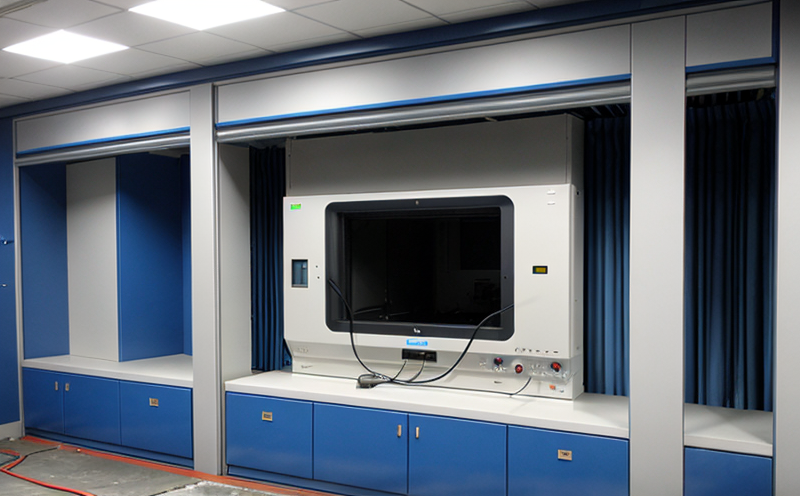Electromagnetic Compatibility (EMC) Testing: Ensuring Safe and Reliable Electronic Devices
The world of electronics is becoming increasingly complex, with devices that operate at ever-higher frequencies and emit electromagnetic radiation in various forms. As a result, the risk of electromagnetic interference (EMI) has never been higher. Electromagnetic compatibility (EMC) testing is crucial to ensure that electronic devices do not interfere with each other or with external systems, and that they are safe for users.
What is Electromagnetic Compatibility?
Electromagnetic compatibility refers to the ability of an electronic device to function as intended in its electromagnetic environment without causing interference to other devices. EMC testing assesses a devices performance under various conditions, including radiated and conducted emissions, susceptibility to external signals, and compliance with regulatory standards.
The Importance of EMC Testing
EMC testing is essential for several reasons:
Ensures safe operation: A device that emits excessive electromagnetic radiation can cause harm to users or damage other devices.
Prevents interference: Devices that are not designed to meet EMC standards can interfere with other electronic systems, causing malfunctions or disruptions.
Meets regulatory requirements: Compliance with national and international regulations is mandatory for many industries, including aerospace, defense, and medical equipment.
Protects brand reputation: A device that fails to meet EMC standards can damage a companys reputation and lead to costly recalls.
Types of EMC Testing
There are several types of EMC testing, each designed to assess different aspects of a devices performance:
1.
Radiated Emissions (RE) Testing: Measures the electromagnetic radiation emitted by a device, typically in the frequency range of 30 MHz to 40 GHz.
2.
Conducted Emissions (CE) Testing: Assesses the electrical noise emitted by a device through its power cables and other conductive paths.
3.
Radiated Susceptibility (RS) Testing: Evaluates a devices ability to withstand external electromagnetic radiation without experiencing malfunctions or errors.
4.
Conducted Susceptibility (CS) Testing: Measures a devices response to electrical noise introduced into its power supply or other conductive paths.
EMC Testing Methods
There are several methods used in EMC testing, each with its own strengths and limitations:
Antenna-based testing: Uses an antenna to measure the electromagnetic radiation emitted by a device.
Line-of-sight (LOS) testing: Conducted in a controlled environment, this method involves placing the device under test at a specific distance from the receiving antenna.
Near-field testing: Measures the electromagnetic field generated by a device near its surface.
Detailed Explanation of EMC Testing Procedures
Here are detailed explanations of the procedures involved in conducting various types of EMC tests:
Radiated Emissions (RE) Testing:
Test setup: The device under test is placed on an open area or in a shielded enclosure, depending on the frequency range and power level.
Measurement procedure: An antenna is used to capture the electromagnetic radiation emitted by the device. The signal is then processed and analyzed using specialized software.
Sweep rates and averaging: The measurement process typically involves sweeping across the desired frequency range multiple times to ensure accurate results.
Conducted Emissions (CE) Testing:
Test setup: A spectrum analyzer or a network analyzer is connected to the device under test via a coaxial cable or other conductive path.
Measurement procedure: The electrical noise emitted by the device is measured and analyzed using specialized software. The measurement process typically involves sweeping across the desired frequency range multiple times.
Radiated Susceptibility (RS) Testing:
Test setup: A transmitting antenna is used to generate a controlled electromagnetic field near the device under test.
Measurement procedure: The response of the device under test is measured and analyzed using specialized software. The measurement process typically involves sweeping across the desired frequency range multiple times.
Conducted Susceptibility (CS) Testing:
Test setup: A signal generator or a noise source is connected to the device under test via a coaxial cable or other conductive path.
Measurement procedure: The response of the device under test is measured and analyzed using specialized software. The measurement process typically involves sweeping across the desired frequency range multiple times.
QA Section
1.
What is the difference between radiated and conducted emissions?
Radiated emissions refer to electromagnetic radiation emitted by a device, while conducted emissions refer to electrical noise emitted through conductive paths.
2. Why do some devices require both radiated and conducted susceptibility testing?
Some devices may be susceptible to both external electromagnetic radiation and electrical noise introduced into their power supply or other conductive paths.
3. What is the purpose of using a shielded enclosure in EMC testing?
A shielded enclosure helps reduce electromagnetic interference from external sources, allowing for more accurate measurement results.
4. Can I conduct EMC testing on my own without specialized equipment and expertise?
While it is possible to conduct basic EMC tests, it is generally recommended to use a qualified test laboratory with the necessary equipment and expertise to ensure accurate and reliable results.
5. What are some common sources of electromagnetic interference in electronic devices?
Common sources include power supplies, switching regulators, microcontrollers, and analog circuits.
6. How often should I conduct EMC testing on my products?
The frequency of EMC testing depends on the products complexity, operating environment, and regulatory requirements. Typically, testing is performed during design validation, production, and periodic retesting.
7. Can I use a commercial-off-the-shelf (COTS) component without considering its EMC characteristics?
While COTS components can be convenient, they may not meet the necessary EMC standards for your specific application. Its essential to evaluate their EMC performance before using them in your product.
In conclusion, electromagnetic compatibility testing is an essential step in ensuring that electronic devices operate safely and reliably in a variety of environments. By understanding the principles of EMC testing and following industry guidelines, you can ensure compliance with regulatory requirements and protect your brand reputation.

































